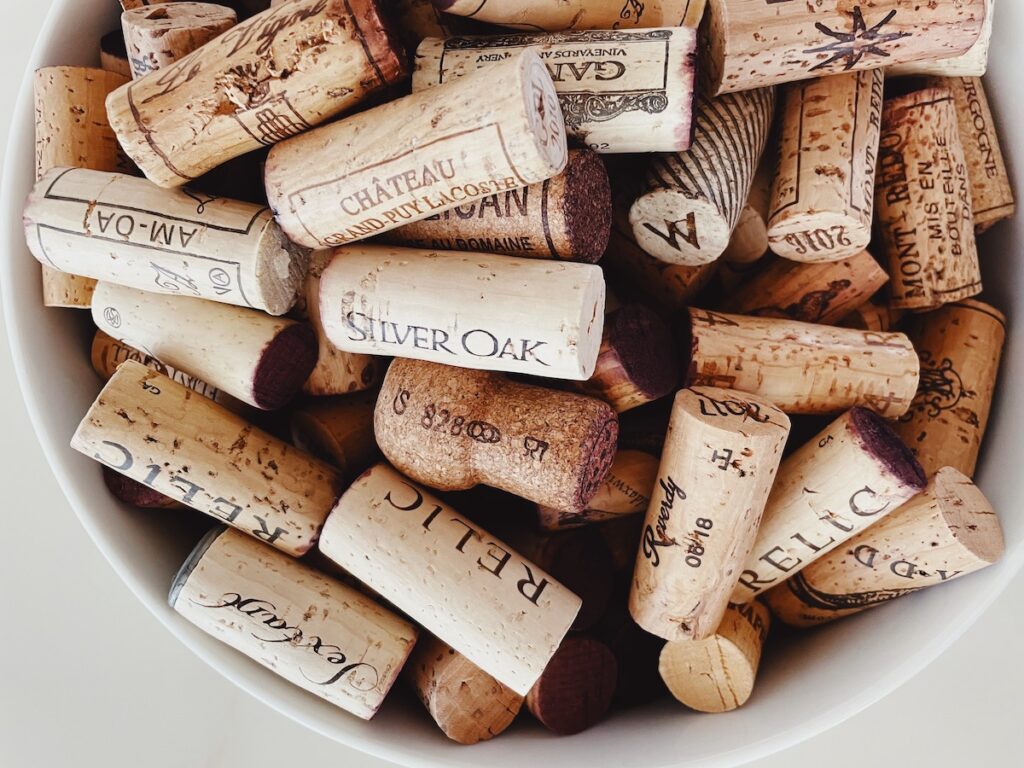Natural cork is a renewable resource harvested from a specific species of Oak tree called the Quercus Suber, also known as the cork tree. These trees are mainly found in the Mediterranean, with Portugal being one of the world’s primary cork producers. Cork has been used throughout history. Before it was used for wine bottles, it donned the bottles of the Greeks and Romans and was used by medieval monks and in Ancient Egypt. Cork has many uses like shoe insoles, wallets, handbags, floor tiles, and, most notably, the wine bottle stoppers. Cork and wine began working together in the seventeenth century when a French monk named Dom Pierre Pérignon turned to cork to preserve the bubbles in his champagne. Today, the harvest and production of cork provide a livelihood for many Portuguese families, as Portugal supplies about half of the world’s cork.
Cork is considered a renewable resource because it’s made from the tree’s bark, which means trees don’t have to be cut down to harvest the cork. Portugal has put laws in place to regulate the frequency of harvest to preserve the trees and the benefits they provide, which span from environmental to economic. The Mediterranean’s cork forests are some of the most biodiverse on the planet and home to endangered species like the Iberian Lynx and the Iberian Imperial Eagle. According to a study by the School of Agronomy in Lisbon, the biodiverse system that cork trees create is an active carbon sink, storing some 14 million tons of CO2.
Canadian shoe company SOLE developed the cork recycling program called ReCORK, which identifies cork as a carbon-negative product due to the cork trees’ ability to sequester a large amount of carbon. Research done by ReCORK compares the carbon footprint of three wine bottle closures; screw caps, plastic stoppers, and cork. They found that aluminum screw caps waste 37 grams of carbon dioxide (CO2) per 1,000 closures and plastic wastes 16 grams per 1,000 closures. In contrast, cork production only produces 5 grams of CO2 per 1,000 closures.
The beauty of cork is that when it’s recycled into something new, it carries its carbon neutrality forward. This is a great reason to collect your wine corks and send them to a company that can recycle them.
There are a couple of organizations that offer free recycling options to consumers:
By establishing a network of public collection bins for wine corks, ReCORK has become North America’s largest recycler of natural corks. Recycled cork material is used to replace petroleum-based foams and plastics in consumer products such as shoes. Use this tool to find a collection box near you.
If you’re a retailer, consider becoming a ReCORK partner and host a collection bin in your shop.
WidgetCO, which creates all types of cork products for businesses, created Cork Club, a recycling initiative. For each natural cork they receive for recycling, they donate 2 cents to ocean and forest conservation efforts. To date, they’ve donated over $120,000 to these initiatives. Anyone from anywhere can participate in this recycling program. Save your cork and when you’ve accumulated enough, ship them to 5000 Gulf Fwy., Bldg.6, Houston, TX 77204
Both organizations, ReCORK and Cork Club offer recycling solutions for businesses that use cork in their manufacturing processes.
Businesses using 100% natural cork products can send scraps to ReCORK to be recycled. They simply ask that shipments sent weigh between 15 and 30 pounds to achieve the most economical and environmental efficiency.
Just like consumers, business can send leftover cork to Cork Club for recycling. The added bonus of Cork Club is if you send plastic cork, they will ensure it gets recycled.
The recycling solutions offered by Cork Club and ReCORK provide consumers a way to control their carbon footprint by ensuring the carbon benefits of cork are carried forward via other products.



